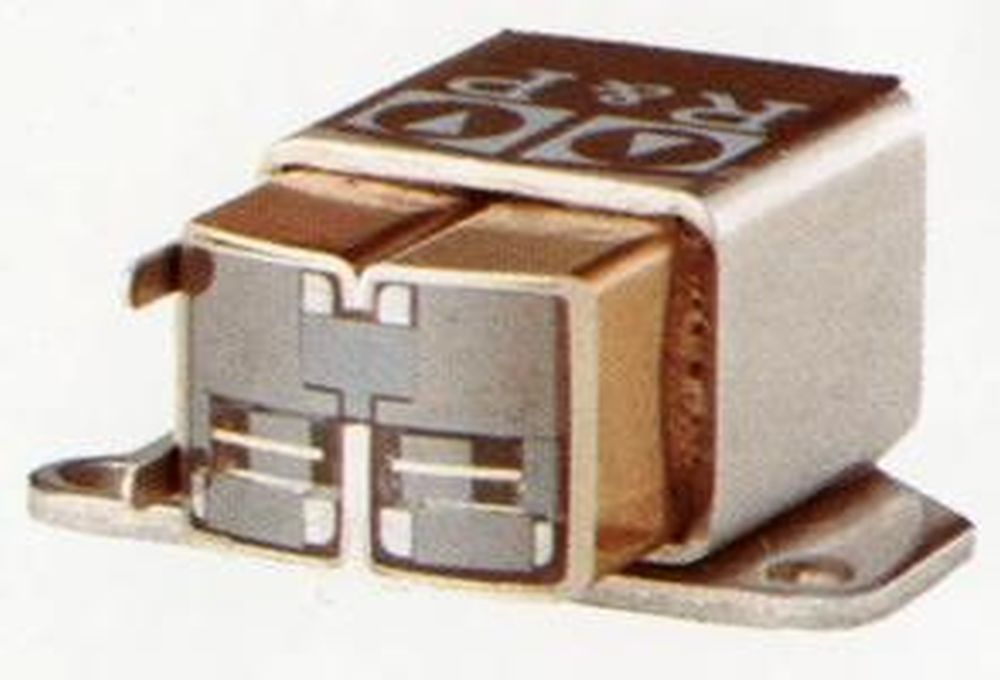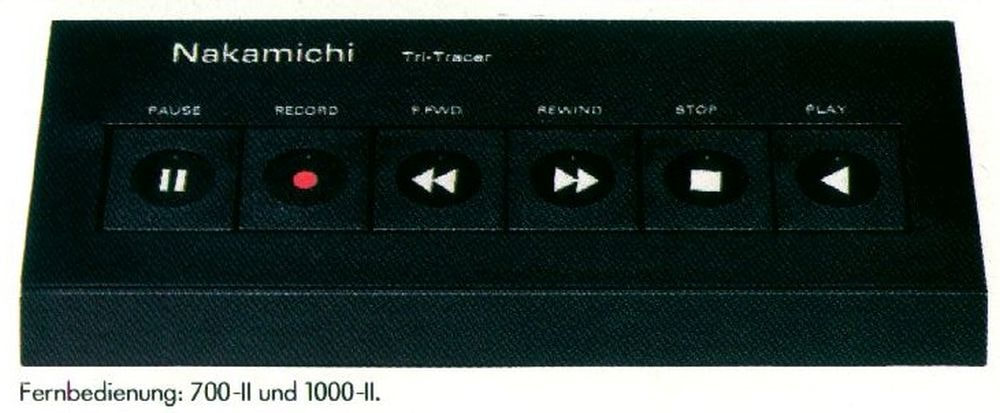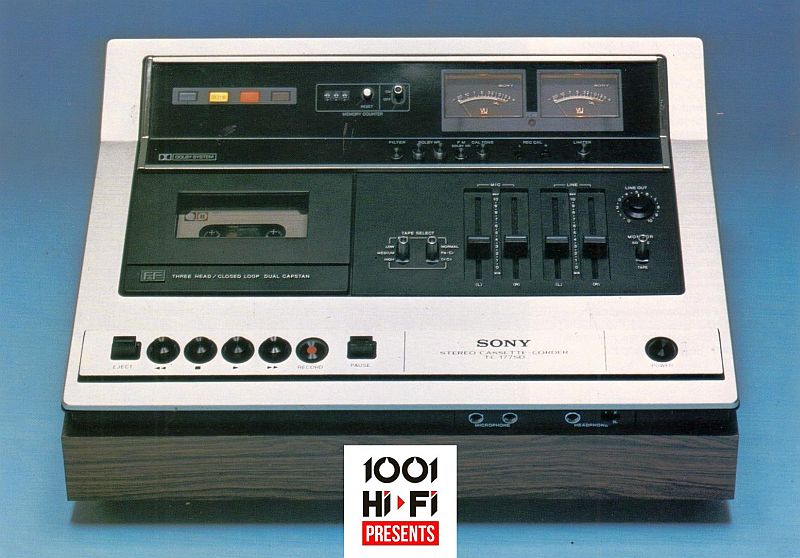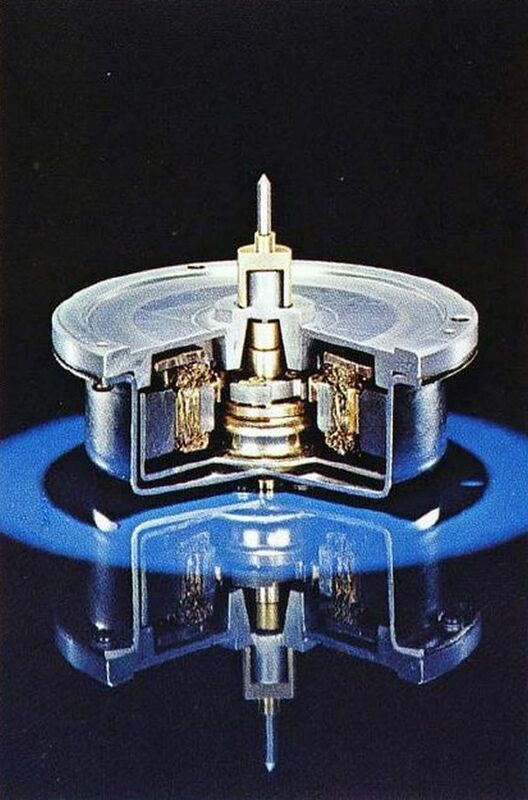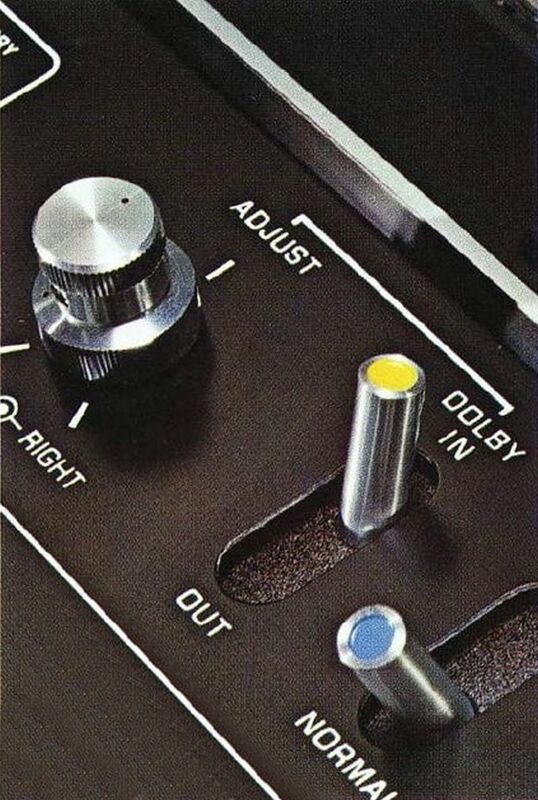LO-D(HITACHI) D-4500 (JAPAN 1973)
Lo-D (a Hitachi brand name in Japan) was at the forefront of cassette deck development. As a consequence, they were among the first manufacturer (along with Nakamichi, Sony and Technics) to introduce a 3-head deck to the market. In contrast with the discrete head arrangement adopted by the other manufacturers, the Lo-D D-4500 was the first deck to employ the "combination/sandwich head" that was later adopted by other manufacturers and it became a de facto standard for 3-head cassette deck. The Lo-D D-4500 model was a Japanese market only model and it was only made to order. The Lo-D D-4500 had a 3-motor dual capstan configuration (1 capstan motor, 2 independent motors for fast winding), solenoid operated mechanism that achieved an extremely low 0.045% wow and flutter figure. The deck was equipped with Dolby noise reduction circuit as well as DCCS (Dolby Calibration Control System) based on a test one to help match tape sensitivity. One of its most striking visual elements was the VU meter bridge, inspired by studio recorders of the time. The RB-1000 wired remote control was available as an accessory. Technical data: Frequency response: 20-20,000 Hz Chrome tape, 20-18,000 maxell UD tape, 20-15,000 Hz normal tape | Signal to noise: 63dB Dolby On | Dimensions: 441x222x312 mm | Weight: 12kg
NAKAMICHI 1000 TRI-TRACER (JAPAN 1973)
According to the Nakamichi literature, the 1000 Tri-Tracer introduced in 1973 was the World First 3-head cassette deck. On the other hand, the SONY TC-177SD was also the World First 3-head cassette deck, so it's up to you to decide which was "The First"... One thing is for sure, the 1000 Tri-Tracer was a technological tour de force. Tri-Tracer is the designation employed by Nakamichi Research Inc. to describe a new generation of cassette recorders. Three completely separate heads - erase, record, playback - afford off-the-tape monitoring, but more importantly, extend flat frequency response to beyond 20,000 Hz. The record head is of Hi-Mu ferrite with five-micron gap to insure optimum tape saturation. The playback head has a special Hi-Mu hard permalloy core with titanium film laminations permitting a gap width of only 0.7 microns, thus extending high frequency response. Also, proper head azimuth alignment is crucial to extend high frequency response. Nakamichi provides a foolproof means for achieving precise alignment every time. Two small LEDs on the panel flash alternately when the head alignment is properly set. A 400 Hz test tone oscillator is incorporated as an aid in adjusting the azimuth of the recording head and as a reference tone for adjusting the record/playback level of different tape formulations. Tape is driven through a closed-loop, dual capstan system by a pulse-controlled D.C. servo motor which maintains constant speed over a wide range of line voltage and frequency variations. Two large staggered flywheels smooth out any residual speed irregularities and insure extremely low wow and flutter. In addition to the standard mic inputs, a third blend mic input is provided. Each input has its own level control thus permitting professional quality mixing. The blend mic is particularly helpful in highlighting solo instruments and voices. Technical data: Wow and Flutter less than 0.1% (DIN 45507 Weighted Peak) | Frequency response: 35-20,000 Hz (+/-3 dB Chrome) | Dimensions 515x305x240 mm | Weight 17,7 kg. Optional accessory: RM10 wired remote control, flight case. Original sale price: 2798 DM, 1100 USD.
SONY TC-177SD (JAPAN 1973)
The SONY TC-177SD (TC-6150SD in Japan) was introduced in 1973 and it was the first 3 head cassette deck from Sony and probably a world first too. Assuring extraordinary sound quality are a ferrite erase head and Ferrite & Ferrite Record and Playback heads. F&F heads give excellent tape-to-head contact and wide frequency response, in addition to lasting up to 200 times longer than the standard permalloy variety. Adding to the excellent performance characteristics is the Closed-Loop Dual Capstan Tape Drive, which severely cuts down tape skewing, modulation distortion and wow and flutter. Being a product of the 70's the deck also had "surround compatibility" Through Symphase Recording, you can record 4-channel sound from an SQ or FM matrix source, and play it back through four speakers and an amplifier equipped with a 4-channel decoder. And the solenoid assisted transport functions provide stable, fast and easy mode changes. Separate bias and tape select switches let you take the advantage of normal, chrome or ferri-chrome tapes. During its production years there were available two versions. The initial models had no azimuth control but later in production this was also added. With only one large motor the rewind and fast forward time was 90sec./C-60. Frequency response is 20 Hz to 20 kHz with both Fe-Cr and CrO2 tapes.
TECHNICS RS-279US (JAPAN 1973)
Introduced in 1970 the Technics RS-275U was the World's First cassette deck to employ the Direct-Drive system developed for turntables. Based on this 2-motor solenoid-controlled mechanism with Direct Drive capstan and DC motor for the reel-table-drive, Technics introduced its first 3 Head cassette deck, the RS-279US in 1973. Being an early 3 head cassette deck the head arrangement is slightly different than the standard arrangement later used by 3 head models. The erase head is a full-size head followed by a recording/playback head (as in 2 head arrangements). The third head is a monitoring head (small window) located between the recording/playback head and pinch roller. Both the recording/playback and monitoring head use the HPF (high pressure ferrite) head with 10-year guaranty developed by Technics. Another unusual feature of the deck was the Dolby noise reduction with adjustable level. (L and R channel independently adjustable). Frequency response is 20-16000 Hz with normal tape and 20-18000 Hz with Chrome tape ... while externally it measures 440x115x325 mm. The deck can be remote controlled via the RP-9275 wired remote while for transportation the RP-985 solid carry case was sold as accessory. The deck was sold under National Panasonic | Technics by Panasonic | Technics with a National logo | or simply Technics, brand names, while the remote control was a National Panasonic branded model.



